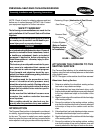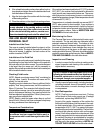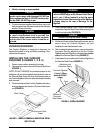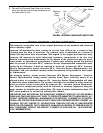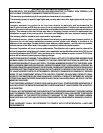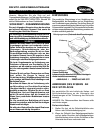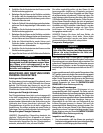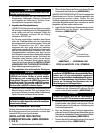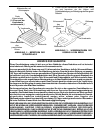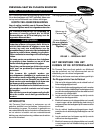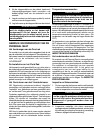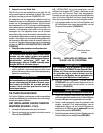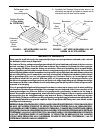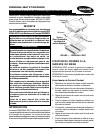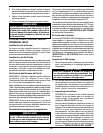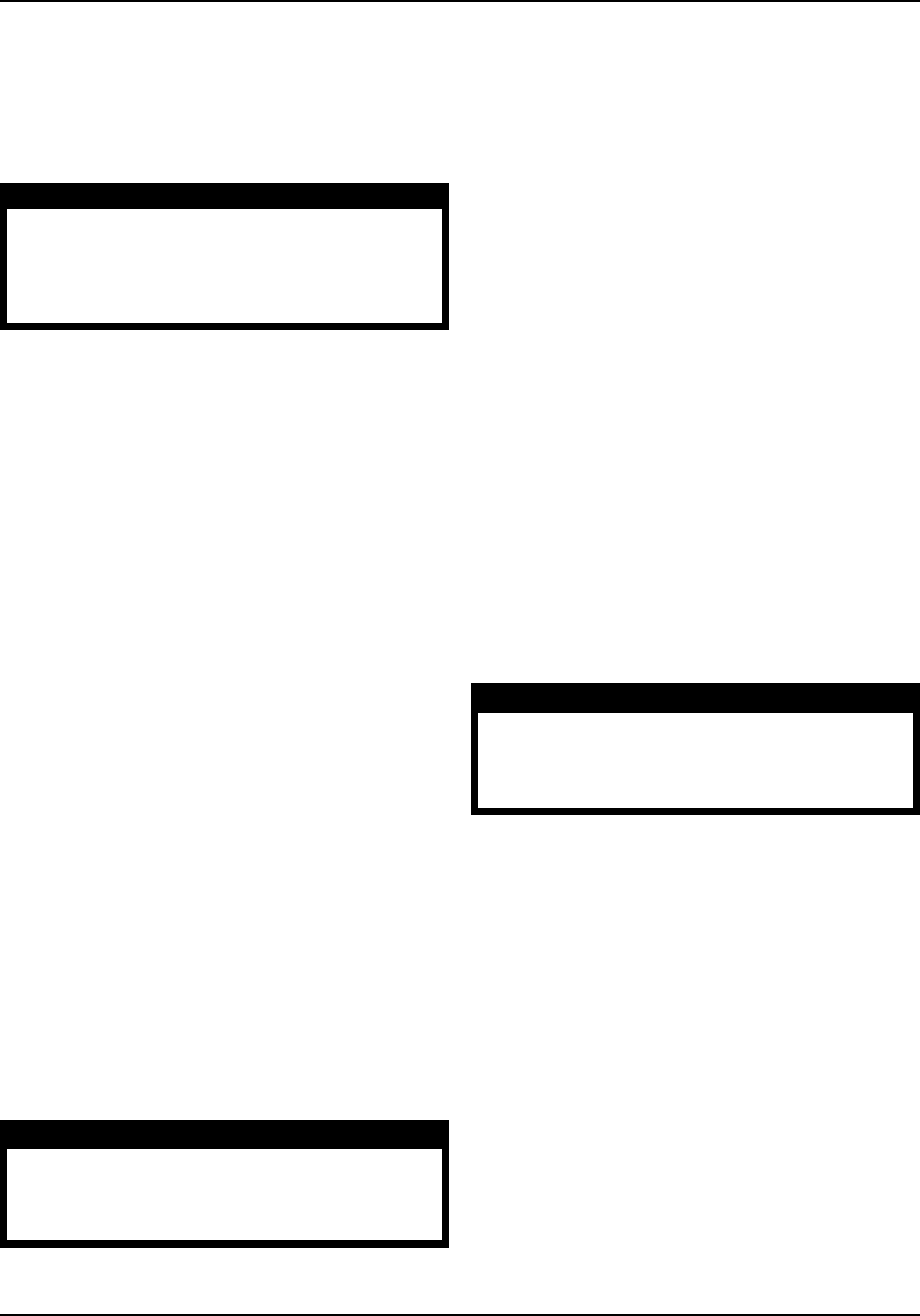
2
If the cushion has been stored below 41°F (5°C) or above
90°F (32°C), the cushion fluid pad should be allowed to
reach normal room temperature before use. The remov-
able fluid pad can be immersed in warm or cold water to
speed the temperature change. (Water temperature should
not exceed 50°F (122°C).
Temperatures in a closed automobile can exceed 201°F
(94°C) when parked in direct sunlight. If your cushion is
exposed to increased temperatures, check the fluid pad
temperature before actual use and verify that the fluid in
the pad remains uniform. Refer to INSPECTION AND
CLEANING in this instruction sheet.
Maintaining the Cover
The Personal Seat cover is fabricated with water repel-
lant materials. The top and sides are fabricated with a
patented waterproof stretch fabric. The bottom is fabri-
cated from a special waterproof heavyweight fabric. In
the event of incontinence, some leakage may occur at
the seam stitching or at the zipper, so the water repellant
coating should be cleaned. The cover should be machine
washed in warm water and let hang dry. Refer to INSPEC-
TION AND CLEANING in this instruction sheet.
Inspection and Cleaning
1. In order to ensure that the cushion is working as de-
signed, inspection and cleaning of the cushion on a
regular basis is necessary.
WARNING
DO NOT continue to use this product if any of the
following problems as described are discovered.
Corrective maintenance can be performed at
or arranged through your equipment supplier.
2. Visually inspect all parts weekly, including hardware,
upholstery materials, foams (if accessible), and plas-
tics for deformation, corrosion, breakage, wear and/
or compression.
3. Fluid Pad Inspection:
NOTE: Fluid bag contents are non-toxic. The bag
will not break or leak under normal use. If leakage
is detected, replace bag IMMEDIATELY.
As part of the regular inspection of the cushion the
fluid pad should be taken out of the recess in the cush-
ion and inspected also. If the cushion is exposed to
temperatures of 54°C (129°F) or greater, this inspec-
tion should be performed immediately. The fluid in the
pad should be uniformly white in color and homoge-
neous. If the fluid has areas that are translucent, it has
probably separated into its components and needs to
be remixed. Remixing is accomplished by kneading
the pad until the fluid is uniformly white in color. Rein-
stall the pad in the recess according to INSTALLA-
TION OF THE FLUID PAD in this instruction sheet.
8. If the wheelchair seating surface has neither hook or
loop attachment strips, remove the double sided hook
from the bottom of the cover.
9. Align the front edge of the cushion with the front edge
of the seating surface.
10. Place the cushion on the wheelchair seating surface.
WARNING
Make sure the hook and loop fasteners are se-
curely attached to the seating surface and the
cushion before using. If the cushion is not secured
to the wheelchair seating surface, exercise cau-
tion when transferring in and out of the wheelchair.
USE AND MAINTENANCE OF THE
PERSONAL SEAT
Installation of the Cover
The cover is properly installed when the zipper is at the
back of the cushion. The back of the cushion is where the
fluid pad is located. In addition, the back surface of the
cushion is marked, “BACK”.
Installation of the Fluid Pad
The pad can be easily and properly installed in the recess
by matching the loop strips on the bottom of the pad with
the hook strips in the cushion recess. The pad is designed
to be larger than the recess so it will be necessary to
position the pad with accordian folds so that the entire pad
will be located inside the recess.
Checking Fluid Levels:
NOTE: Regular monitoring means "daily" monitoring for
high risk users, "weekly" for medium risk users and "bi-
weekly" for low risk users.
Regularly monitor to determine if there is sufficient fluid to
properly "float" bony prominences, trial fit the cushion for
fifteen (15) minutes. Then, examine the fluid pad for areas
of incomplete coverage, as well as examining the user's
skin for red pressure markings. Any area from which the
fluid has migrated, leaving less than 1/8 inch (3mm) cover-
age, may require additional fluid.
NOTE: Keep in mind that areas where there is no fluid
have 3/4 inch (19mm) of soft foam underpad to help keep
the bony prominence from bottoming out.
Temperature Considerations:
WARNING
Storage of the cushion in areas of extreme cold
or extreme heat can cause the fluid to reach a
temperature which could damage the skin of the
user.



